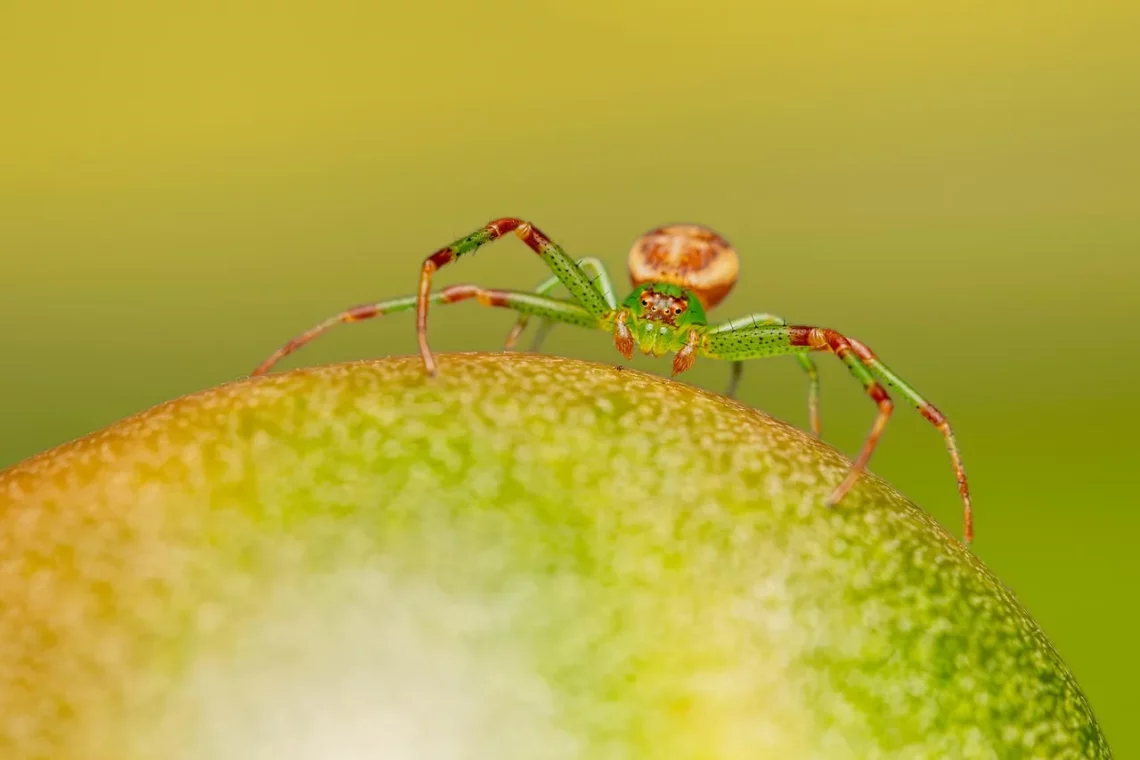
Understanding Brown Recluse Spiders in Washington State
Understanding Brown Recluse Spiders in Washington State
The brown recluse spider, a creature often shrouded in myth and misunderstanding, has garnered attention due to its elusive nature and potent venom. While many people in Washington State may not encounter this spider frequently, awareness of its characteristics and behaviors is essential for residents and visitors alike. The brown recluse, known scientifically as Loxosceles reclusa, is native to the United States but is often mistakenly identified due to its similar appearance to other spider species.
Understanding the brown recluse is crucial not only for pest control but also for public safety. The fear surrounding this spider can often lead to unnecessary panic, making it vital to distinguish fact from fiction. Knowing how to identify this spider, understanding its habitat, and recognizing its behavior can help mitigate risks and promote a healthier coexistence with nature.
As we delve deeper into the realm of the brown recluse spider, we will explore its physical characteristics, habitat preferences, behaviors, and tips for safe interaction. By fostering a better understanding of this fascinating arachnid, we can appreciate its role in the ecosystem while ensuring our own safety and comfort in our environments.
Identifying the Brown Recluse Spider
Identifying a brown recluse spider can be challenging, especially since many spiders share similar characteristics. The adult brown recluse has a distinct appearance that can aid in its identification. Typically, they possess a characteristic violin-shaped marking on their cephalothorax, which is the fused head and thorax. This marking is often lighter in color than the rest of the body and can vary in hue from yellowish-tan to brown.
The size of the brown recluse is another identifying feature. Adults typically measure between 1/4 to 1/2 inch long, excluding the legs. Their legs are long and slender, often extending beyond the body and giving them a spindly appearance. Additionally, brown recluses have six eyes arranged in pairs, unlike most spiders which have eight. This unique eye arrangement can be a helpful indicator when trying to identify this species.
It is crucial to note that juvenile brown recluse spiders may not exhibit the same physical characteristics as adults, making them harder to identify. Young spiders are often smaller and may lack the distinct violin marking, leading to confusion with other spider species. Therefore, it’s essential for individuals to familiarize themselves with the general traits of brown recluses rather than relying solely on specific markings.
Understanding the common misconceptions surrounding this spider is equally important. Many people believe that all brown spiders are brown recluses, which is misleading. Numerous harmless spider species share similar coloration, making proper identification essential to avoid unnecessary fear.
In Washington State, sightings of brown recluse spiders are rare but not impossible. Their presence is more common in warmer, southern regions, yet they can occasionally be found in homes, especially in undisturbed areas like basements and attics. By being aware of their identifying features, individuals can better discern whether a spider is indeed a brown recluse or another harmless species.
Habitat and Behavior of the Brown Recluse
The brown recluse spider prefers specific habitats that provide shelter and conducive conditions for their survival. Typically, these spiders are found in dry, warm environments where they can hide from predators and humans alike. In Washington State, brown recluses may be discovered in undisturbed areas such as woodpiles, storage boxes, and attics. They are not particularly aggressive and often retreat when disturbed, which is why they are referred to as “recluse.”
Behaviorally, the brown recluse is nocturnal, meaning it is most active during the night when it hunts for food. They primarily feed on insects, which they catch using their silk webs. Unlike many other spider species, brown recluses do not spin elaborate webs to trap prey. Instead, they create irregular, untidy webs where they wait for unsuspecting insects to wander too close.
While they are generally shy and prefer to avoid human interaction, encounters can happen, particularly if their hiding places are disturbed. In such cases, individuals should remain calm and avoid sudden movements. It’s essential to remember that brown recluses are not prone to bite unless they feel threatened or cornered.
Breeding occurs in the warmer months, with female brown recluses laying eggs in silk sacs that can contain dozens of eggs. After a few weeks, the eggs hatch, and the young spiders disperse to find their own habitats. Though they are not known to exhibit social behavior, brown recluses may sometimes be found in groups when conditions are favorable.
In conclusion, understanding the habitat and behavior of the brown recluse spider can help dispel myths and reduce fear. Recognizing their preference for secluded environments and nocturnal activities can aid individuals in mitigating potential encounters. Awareness and education are key to coexisting with these fascinating arachnids while ensuring personal safety.
Safety Precautions and First Aid for Brown Recluse Bites
While encounters with brown recluse spiders are rare, knowing how to respond in the event of a bite is crucial for safety. Brown recluse bites can lead to serious medical issues, but prompt and appropriate action can significantly reduce complications.
If bitten, the first step is to remain calm. Panic can exacerbate stress and potentially worsen the situation. It’s essential to clean the bite area with soap and water to prevent infection. Applying a cool compress can help minimize swelling and alleviate pain. Over-the-counter pain relievers may also provide relief, but it’s important to avoid any medications that could thin the blood, as this may complicate the injury.
Monitoring the bite site for changes is vital. Symptoms of a brown recluse bite can vary from mild irritation to severe reactions. Initial symptoms may include redness, itching, and swelling at the site. In some cases, a blister may form, and necrosis can occur, leading to tissue damage. If any severe symptoms develop, such as fever, chills, or increasing pain, medical attention should be sought immediately.
It’s crucial to remember that not every bite from a brown recluse will result in severe complications. Many bites heal on their own without the need for extensive medical intervention. However, due to the potential risks associated with their venom, consulting a healthcare professional is always advisable if there’s any concern about a bite.
Prevention is the best strategy when it comes to avoiding brown recluse bites. Keeping living spaces clean and clutter-free can reduce potential hiding spots for spiders. Regularly checking storage areas and sealing cracks and crevices can help deter these spiders from entering homes.
In summary, while the brown recluse spider can pose risks, understanding how to recognize their bites and taking appropriate precautions can significantly enhance safety. Education and awareness are essential in managing the potential dangers associated with these spiders.
**Disclaimer:** This article is not intended as medical advice. For health issues or concerns, always consult a qualified healthcare provider.




